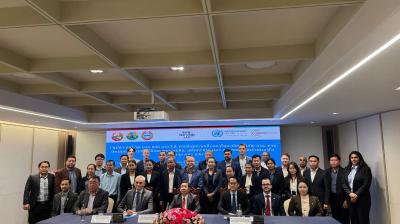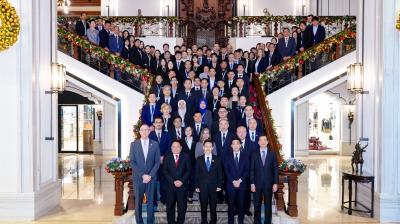Building capacity in Africa to achieve Early Warnings for All
Effective and targeted communication and dissemination of weather and climate information is essential to build resilience and adapt to climate change. This is particularly true in Africa, where there are significant gaps in the dissemination of weather and climate information and where adaptive capacity remains low.

Thus, WMO is providing training to National Meteorological and Hydrological Services (NMHSs) in Africa to equip them with the knowledge and tools to effectively disseminate climate information and early warnings through digital content creation. The interest in this training is impressive: an online session from 6–10 February, led by the WMO Regional Office for Africa, attracted 200 participants from 52 African countries – all but one of the WMO Members in the Region.
The training aimed to strengthen the NMHSs' capacity to provide early warnings and climate communications to improve the uptake of climate information and to promote adaptation to climate change. It addressed data management, digital marketing, the production of interactive multimedia content and introduced the most popular graphic design and video software tools. The ultimate goal was to advance implementation of the United Nations Early Warnings for All initiative and of the Paris Agreement of the United Nations Framework Convention on Climate Change as well as to assist Members in the development of national climate services strategies.
The facilitators were from various public and private organizations, including African NMHSs, Google, Meta, the Met Office of the United Kingdom, the International Federation of Red Cross and Red Crescent Societies (IFRC), the Intergovernmental Authority on Development’s (IGAD) Climate Prediction & Applications Centre (ICPAC) and BBC Media Action. They provided expert insights in many areas:
- State-of-the-art methods to disseminate weather and climate information
- The structuring of Public Weather Service Departments
- The Common Alerting Protocol (CAP)
- Colour-coding and impact-based forecasting
- Public information best practices for early warning and climate communications
- The identification of user/audience needs
- Survey methods for audience research
- Graphic content creation and video production with various software tools
- The use of data management systems to improve tailoring of services
- Email marketing and state-of-the-art software to segment and grow audiences
- Setting-up efficient social media channels.
- The participants represented the Public Weather Service, Communications, Management and ICT departments of the various NMHSs.
The training is a significant step towards closing the gap in disseminating weather and climate information in Africa, particularly in the Least Developed Countries (LDCs) and Small Island Developing States (SIDS). It equips NMHSs with the tools and knowledge to adopt efficient national dissemination strategies and to turn early warning information into early action. It is critical in building resilience and adaptation to climate change. It is hoped that it will improve the capacity of African NMHSs to disseminate weather and climate services effectively.
- Region:
- Region I: Africa










